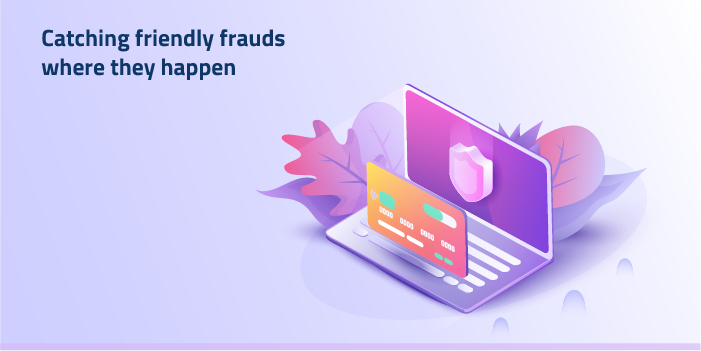
Catching friendly frauds where they happen
When someone says internet fraud, the immediate image that may come to mind is that of sophisticated criminals, adept at identity theft and online hacking. Yet, there is another seemingly simple, duplicitous act that costs businesses billions: chargeback frauds.
Also called friendly frauds, this particular technique is when a customer disputes a legitimate transaction and claims a refund. Imagine this: a customer orders clothes online. After receiving them, they realize they don’t want the clothes, for some vague reason. Unsure of the company’s online return policy, and regretful of the money that the choice has cost, they decide to dispute the charge with the provider on the grounds of a stolen card, even though they authorized the purchase and even received the goods.
While one such transaction may be negligible for a large business, false claims add up quickly in the larger scheme of things. In fact, the total cost of chargebacks to merchants and banks was about $31 billion in 2017, according to a Javelin study.
Butterfly Effect
Yet, that estimate is understated because it neglects other stakeholders: service providers, acquirers, and customers.
Tightening security and screening for fraudulent transactions raise administrative costs. Repeatedly incorrect claims for a company could lead to them losing their merchant identification number, or may necessitate high-risk merchant processors, escalating costs further. It could also lead to lost business because of false positives. Chargeback frauds have a butterfly effect on online business, with the revenue loss hitting multiple parties.
According to The Chargeback Company, after accounting for all these effects, the actual financial impact of friendly frauds is more than $150 billion a year.
Defense Against Friendly Frauds
Though chargeback mechanisms are important for protecting customers against fraud, its abuse has piled on to existing internet scams that need to be addressed.
Traditionally, fraud prevention comes under the purview of customer service. However, chargeback cons require more nuanced understanding of the business as well as customer profiles compared to server hackings or identity thefts. Apart from end-to-end merchant platform protections, it also requires a holistic understanding of merchant-customer relationships and ecosystems.
Many times, businesses do not leverage the customer data they have on hand to conduct a thorough analysis at the point of purchase. Even if they do, they are insufficient. According to the Javelin study, 58% of merchants feel that they do not use customer data adequately to prevent fraud. Another 30% say they do not measure false positives.
This goes to show that stronger checkpoints at earlier stages are required for not only preventing such scams, but also for retaining genuine clients.
Apart from having strong evidence to reactively protect against fraud, businesses can also employ machine learning technology for data analysis and catching false positives. Artificial intelligence can spot anomalies in large-scale transactions within seconds, using trend-insights and learned knowledge.
The Final Word
Reactive solutions can only stem damage. But chargeback prevention requires value-added strategies that protect both companies and customers so that the online environment is a safer space to conduct business.


